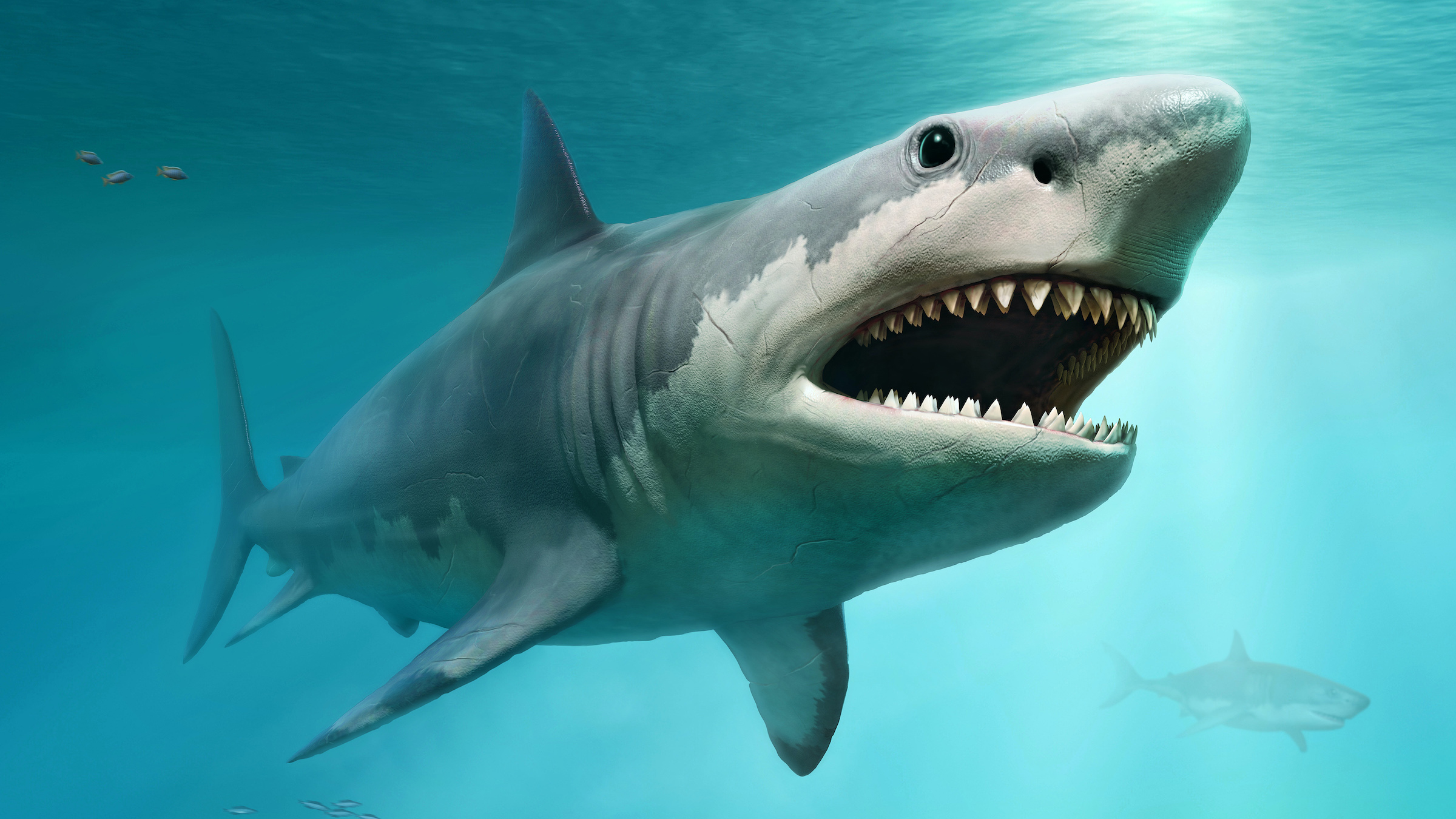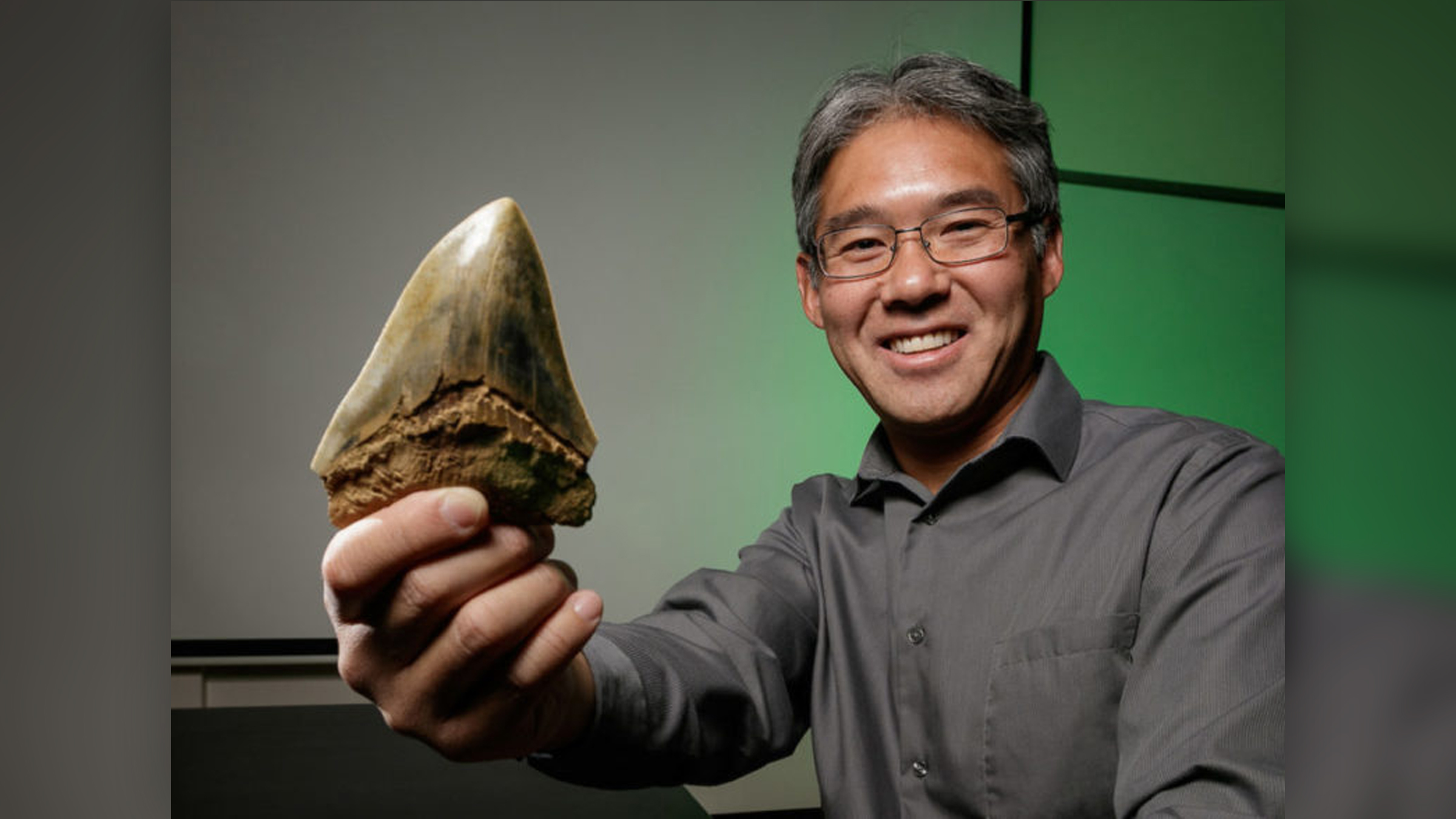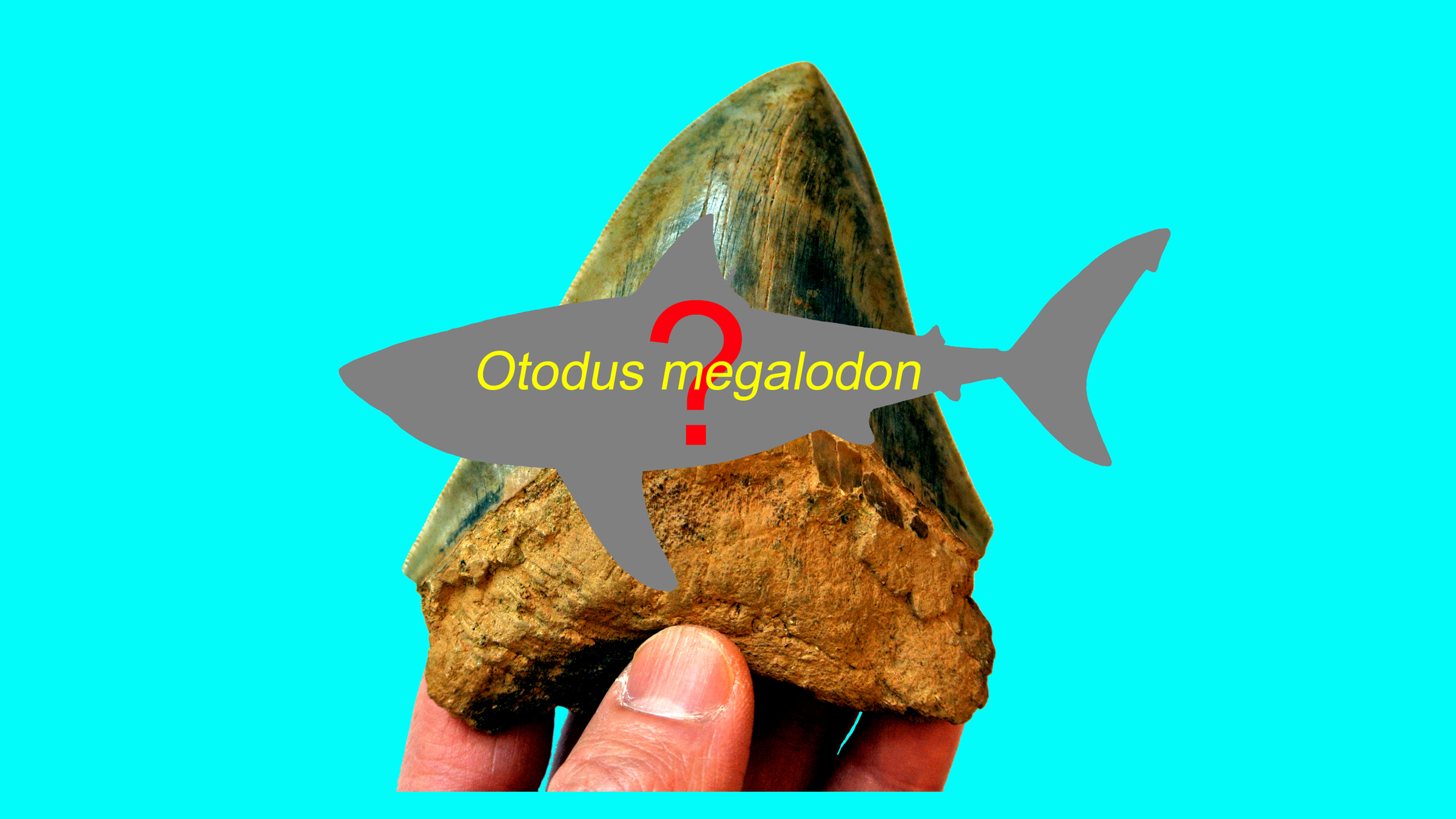What did 'the meg' look like? We have no idea.
All we know is that megalodon was a giant shark with big teeth.

What did megalodon, the most massive shark that ever lived, look like? Scientists have no idea, a new study finds.
Despite many depictions of the now-extinct shark, including the one in the 2018 sci-fi action movie "The Meg," nobody alive today has a clue about the proportions of megalodon's head, fins and body shape.
Based on its jumbo-size teeth, megalodon (Otodus megalodon) likely reached lengths of at least 49 feet (15 meters) and as much as 65 feet (20 m), making it a colossal beast compared with modern great white sharks (Carcharodon carcharias) that reach lengths of 20 feet (6 m). "So, it was definitely a big, big shark with a lot of big teeth," but not much else is known beyond that, study lead researcher Phillip Sternes, a doctoral candidate in the Department of Evolution, Ecology and Organismal Biology at the University of California, Riverside, told Live Science in an email.
Related: 7 unanswered questions about sharks
The megatoothed shark lived from about 15 million to 3.6 million years ago in warm waters all over the world. However, researchers have only found megalodon teeth and vertebrae. "This happens with all sharks in the fossil record, as a shark's skeleton is made of cartilage," Sternes said. "Cartilage does not preserve well in the fossil record, making it hard for us to understand the body form of extinct sharks."
In the past, researchers modeled megalodon after the great white shark. However, the current scientific consensus is that megalodon belonged to an extinct family, Otodontidae, in the same order as the great white, called Lamniformes.
In the new study, the researchers looked at a past model of the megalodon's appearance that was drawn from two-dimensional analyses of five species of living Lamniformes, including great white sharks and mako sharks. These five were selected because they are partly warm-blooded, as some researchers think megalodon may have been.
Sign up for the Live Science daily newsletter now
Get the world’s most fascinating discoveries delivered straight to your inbox.

But Sternes and his colleagues' own analysis of two-dimensional field guide drawings suggests there's no obvious reason to include only those five shark species, while excluding the other 10, because there are no systematic differences in appearance between cold and partly warm blooded sharks in this order. And because all 15 species in the order look different from each other, you can't say much about the megalodon's appearance by analyzing just the warm-blooded ones.
The new study shows "that body form doesn't really correspond to physiology very well," said Robert Boessenecker, a marine mammal paleontology expert and a research fellow at the Mace Brown Museum of Natural History at the College of Charleston in South Carolina, who was not involved in the study.
However, the researchers of the new study "used generalized illustrations rather than photographs of sharks," in the analysis, Boessenecker told Live Science in an email. "And though the authors point out that the illustrations are all by the same artist/scientist, standardized, and intended to represent a generalized or typical individual shark for each species — it's still artwork, and such illustrations need to be ground-truthed by analysis of photographs (which the original study used).
In other words, it's possible that relying on illustrations affected the results of the study.

So, will we ever know what megalodon looked like?
Finding a preserved megalodon specimen "will be very difficult — we don't have many large Cenozoic [66 million years ago to present] shark skeletons, and not even a complete articulated dentition of a megatoothed shark," Boessenecker said. But there are a few places in the world that could conceivably preserve "a fossil with a body outline or some preserved cartilaginous elements of one of the megatooth species," Boessenecker said. These include the Pisco Basin of Peru, which dates to the Miocene epoch (23.3 million to 5.3 million years ago), and the Monte Bolca fossil area in Italy, which dates to the Eocene epoch (56 million to 33.9 million years ago).
"In all honesty, until we have skeletal remains of megalodon, science does not know what the shark actually looked like," Sternes said. That said, "it could very well have looked like any of the 15 living lamniform species. I still say those are a good source for inspiration and possibilities."
The study was published online Monday (Feb. 7) in the journal Historical Biology.
Originally published on Live Science.

Laura is the archaeology and Life's Little Mysteries editor at Live Science. She also reports on general science, including paleontology. Her work has appeared in The New York Times, Scholastic, Popular Science and Spectrum, a site on autism research. She has won multiple awards from the Society of Professional Journalists and the Washington Newspaper Publishers Association for her reporting at a weekly newspaper near Seattle. Laura holds a bachelor's degree in English literature and psychology from Washington University in St. Louis and a master's degree in science writing from NYU.










